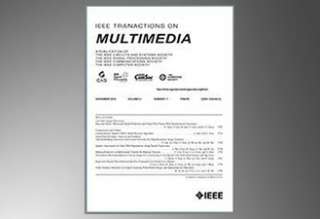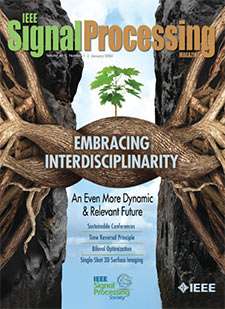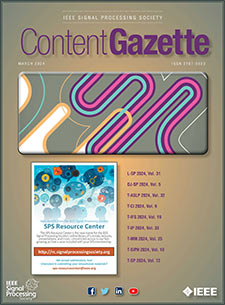Statistical Principles of Time Reversal
Top Reasons to Join SPS Today!
1. IEEE Signal Processing Magazine
2. Signal Processing Digital Library*
3. Inside Signal Processing Newsletter
4. SPS Resource Center
5. Career advancement & recognition
6. Discounts on conferences and publications
7. Professional networking
8. Communities for students, young professionals, and women
9. Volunteer opportunities
10. Coming soon! PDH/CEU credits
Click here to learn more.
Statistical Principles of Time Reversal
Time reversal is a physical principle well known for its deterministic focusing effect. Recently discovered statistical effects show that the time reversal focusing spot is not a point but has a Bessel power distribution. This finding offers accurate and reliable speed estimation indoors, where multipaths are abundant, with mostly nonline-of-sight (NLOS) conditions, and enable various indoor applications, such as wireless sensing and tracking. No known techniques can thrive in such scenarios. In essence, time reversal is an effective tool that embraces multipaths as virtual sensors with hundreds of thousands of degrees of freedom for our utilization.
The time reversal physical principle has been known for a long time, but it has largely been limited to fundamental scientific exploration [1] or niche defense applications, particularly in the field of underwater acoustic communications [2]. It has rarely been known to the general public, due to its limited impact on daily life. Only in the early 2000s, with the broadening of commercial radio frequency (RF) bandwidth resulting in more resolvable multipaths, did the utilization of time reversal for extensive consumer applications using RF become possible [3].
With the ubiquity of RF radios in modern times, multipaths are abundant, and time reversal embraces multipaths, in contrast to most existing techniques that often treat multipaths as nuisances to be eliminated. Essentially, each multipath may contain valuable and distinct information along its pathway, rendering each multipath signal akin to a virtual sensor [4]. Consequently, one can imagine that the multitude of multipaths encompassing our surroundings can serve as virtual sensors that can be harnessed at will, offering new degrees of freedom for our utilization, which may not have been previously realized [5] [4].
The principle of time reversal in physics states that when a sufficient number of multipath signals are captured and time reversed, they coalesce into a singular focal spot on a wavelength scale, resulting in a concentration of power derived from each individual multipath. In particular, when receiver (Rx) A emits a radio impulse in a multipath environment, transmitter (Tx) B receives a profile of multipaths. If Tx B time reverses the profile, reversing the order of arrival such that the last goes first and the first goes last, then all the multipath signals will converge at Rx A constructively with a coherent phase, resulting in the accumulation of energy at the precise focal spot [1]. As we see in the sequel, this is just the beginning of what time reversal can offer.
SPS on Twitter
- DEADLINE EXTENDED: The 2023 IEEE International Workshop on Machine Learning for Signal Processing is now accepting… https://t.co/NLH2u19a3y
- ONE MONTH OUT! We are celebrating the inaugural SPS Day on 2 June, honoring the date the Society was established in… https://t.co/V6Z3wKGK1O
- The new SPS Scholarship Program welcomes applications from students interested in pursuing signal processing educat… https://t.co/0aYPMDSWDj
- CALL FOR PAPERS: The IEEE Journal of Selected Topics in Signal Processing is now seeking submissions for a Special… https://t.co/NPCGrSjQbh
- Test your knowledge of signal processing history with our April trivia! Our 75th anniversary celebration continues:… https://t.co/4xal7voFER













